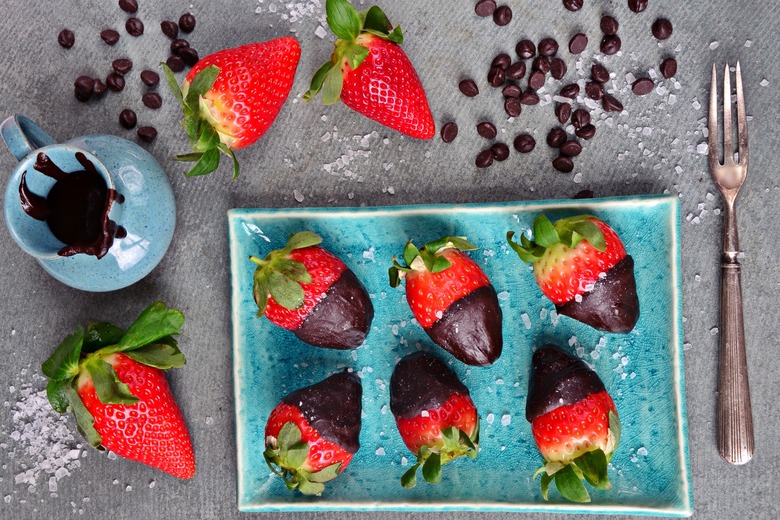Ways To Use Salts In Desserts
Any chef will tell you that a little salt can go a long way, even in a pastry kitchen.
Salt has the ability to enhance flavors and balance desserts that are rich and sweet. Added to the right dessert, salt will improve texture, make citrus fresher, render spices more aromatic and help dark chocolate and cocoa taste less bitter.
It's not all about flavor, though. Baking is a science, and salt is part of that. Salt is an anti-caking agent and an emulsifier, so it brings all the ingredients together. Salt helps activate yeast in dough recipes and reduces the oily texture of butter in tarts. It has effects on appearance as well — leave out that little bit of salt called for by the recipe, and your tart or pie dough just might never reach the perfect golden color you are hoping for.
Adding the right salt can really turn your dessert into a crave-worthy creation. Choose a good quality salt — like Morton (you know, the brand with the Morton Salt Girl on the label) — that has not been overly processed or dyed. You want the purest salt flavor possible. Because after all, the best part of the meal is dessert.
Doughs
Kosher salt and coarse sea salt are the salts you often see celebrity chefs cooking with on television. The grains are larger than those of fine salt, so you can add a pinch into a recipe easily. Kosher salt is often called for in recipes with rich flavors, like cookie dough and caramels. The crystals dissolve quickly and evenly to enhance the flavors of the other ingredients without compromising their sweetness.
Baking
Generally, recipes for cake and other desserts will call for a small amount of salt — so small an amount that you may think twice about adding it. Think again, though, because your dessert needs that salt. Not as a seasoning in its own right, but as an enhancer of flavor, color, and a texture.
If your recipe doesn't indicate a specific kind of salt, then it is likely calling for fine sea salt. While you may be tempted to use table salt, fine sea salt is preferred among chefs. It has a more natural salty taste than table salt and is easy to sift. Fine sea salt also dissolves easily and allows for accuracy and precision, which is important when it comes to balancing flavors in a dessert. This salt will also help to brown crusts in pastry dough, so if you're working on a tart or pie, this is the salt you should always reach for.
Especially if you are baking with gluten-free flours, salt will work to strengthen the protein in them and allow air pockets to form. Those pockets help desserts to rise and create a delicate crumb texture.
Finishing
A few flakes of a textured flaky sea salt can add an ideal burst of flavor to desserts that include fruit or are rich with caramel or chocolate, like a mousse or budino. Different from coarse sea salt, flaky sea salt (often called fleur de sel) has a light and flaky texture. Chef Michael Laiskonis used to add a few flakes to the top of his famed chocolate egg dessert at Le Bernardin when he was pastry chef there. The hint of savory salt and the slight crunch of the flakes balanced with the richness of the chocolate and sweet foam brought the entire dessert together. So much so that Laiskonis won the James Beard Foundation Award for Outstanding Pastry Chef in 2007. Flaky sea salt adds everything you need to finish a dessert: saltiness, visual appeal, and a tiny bit of crunch.
© 2017 Morton Salt, Inc. trademark or registered trademark of Morton Salt, Inc.
